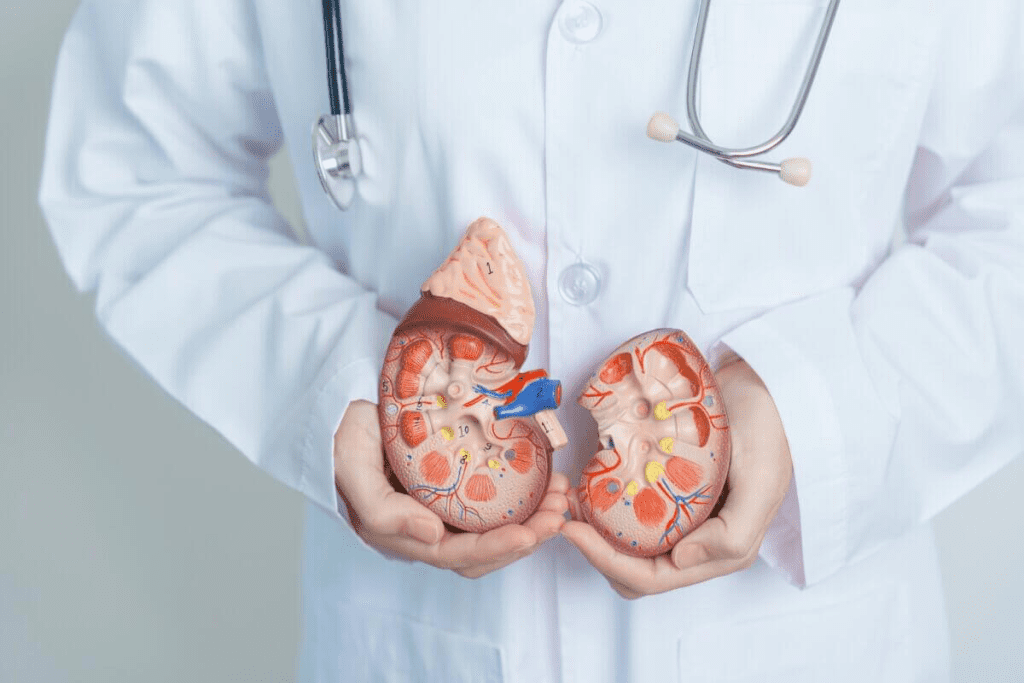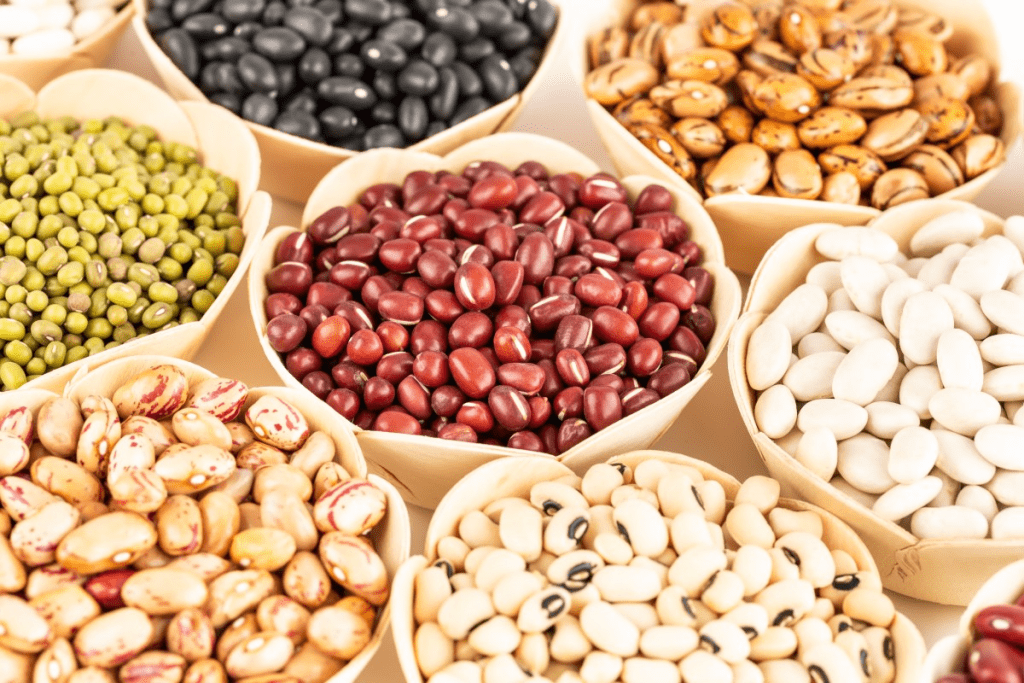Last Updated on October 31, 2025 by
Learn how to avoid kidney stones with our ultimate guide to nuts. Discover the dangerous ones you must avoid and the safe ones to enjoy.
If you often get kidney stones, it’s key to know how food affects them. Knowing your kidney stone type is the first step to stopping them.
Some nuts have a lot of oxalates, which can raise your risk of kidney stones. We’ll look at which nuts you should eat less of to help prevent kidney stones.

Making smart food choices can lower your chance of getting kidney stones. We’ll talk about better nut choices and how to keep oxalate levels down.
Kidney stones are a painful condition that affects millions worldwide. It’s important to know what causes them to prevent them. We will look at the factors that lead to kidney stone formation and how diet plays a role.
Kidney stones are formed by diet, dehydration, and genetics. The doctor says several risk factors can lead to stones. Dietary choices are key in increasing or decreasing stone risk.
Oxalates are found in many foods, including nuts. Calcium oxalate stones are the most common type of kidney stone. A diet high in oxalates can increase the risk of these stones. Research shows that almonds or mixed nuts can add over 100 mg of oxalate, raising stone risk.

It’s important to know that oxalates are just one risk factor for kidney stones. A balanced diet and good hydration are key to preventing them.
For those who get kidney stones, knowing which nuts have a lot of oxalate is key. Nuts are good for you, full of healthy fats and proteins. But some nuts can raise your risk of getting kidney stones because they have a lot of oxalate.

Almonds are loved by many, but they have a lot of oxalate. One ounce of almonds has about 122 milligrams of oxalate. If you like almonds, watch how much you eat to not get too much oxalate.
Cashews also have a lot of oxalate. They have about 70 milligrams of oxalate per ounce. Even though it’s less than almonds, eating a lot of cashews can add up to a lot of oxalate.
Peanuts, which are actually legumes but often called nuts, have oxalate too. Peanuts have about 48 milligrams of oxalate per ounce. While peanuts are usually eaten in small amounts, they can add to your oxalate intake.
Walnuts are good for you, with omega-3 fatty acids. But they also have oxalate. Walnuts have about 31 milligrams of oxalate per ounce. Even though it’s not as much as some nuts, eating too many walnuts can be a problem if you’re at risk for kidney stones.
The National Kidney Foundation says to talk to a dietitian if you get kidney stones. Knowing how much oxalate is in nuts like almonds, cashews, peanuts, and walnuts can help you make better food choices. This can help you manage your kidney stone risk.
For those dealing with kidney stones, knowing about oxalate in nuts and seeds is key. Some nuts are well-known for their high oxalate levels. But others can also be a problem. We’ll look at these lesser-known but important sources of oxalate.
Mixed nuts are a handy snack, but their oxalate content varies. A mix with almonds, cashews, and peanuts is high in oxalates. It’s important to check the ingredients and their oxalate levels when eating mixed nuts.
Sesame seeds are often not seen as a source of oxalate. But they are high in oxalates and can increase your intake. Foods with sesame seeds, like tahini or salad dressings, should be eaten carefully.
Brazil nuts and hazelnuts are also high in oxalates. They are nutritious but should be eaten in small amounts if you’re prone to kidney stones. It’s about balancing their benefits with the risks. Knowing the right portion size helps manage oxalate intake.
Some nuts have more oxalates than others. For example, macadamia nuts and pecans have less. As we’ve discussed, managing kidney stone risk means watching what you eat, including oxalate levels in different foods.
Choosing nuts with lower oxalates is key for those at risk of kidney stones. Nuts can be healthy, but some have more oxalates, raising stone risk.
For those at risk, picking nuts with less oxalate is wise. Pecans or macadamia nuts are safer choices over high-oxalate nuts.
Macadamia nuts are tasty and have less oxalate than many nuts. They’re a smart pick for those watching their kidney stones. Macadamia nuts for kidney stones are a good choice in small amounts.
Pecans can be part of a diet to prevent kidney stones. They have some oxalates, but less than many nuts. Enjoy pecans for kidney stones in small amounts for a balanced diet.
Choosing nuts like macadamia and pecans offers several benefits:
Including these nuts in your diet and watching oxalate intake can help. You can enjoy nuts’ benefits while lowering kidney stone risk.
Managing your diet is key to avoiding kidney stones. Knowing what foods can lead to stones helps you make better choices. This way, you can lower your risk.
It’s important to balance calcium and oxalate in your diet. Calcium helps reduce oxalate absorption, which lowers stone risk. Eat foods high in calcium like dairy, leafy greens, and fortified plant milk all day.
But limit foods high in oxalate. These include some nuts, seeds, and veggies. By balancing these, you can greatly lower your stone risk.
Drinking enough water is key to preventing stones. Water dilutes urine, making it less likely for minerals to form stones. Dr, says drinking water and eating less sodium and animal protein helps a lot.
Other foods also play a big role in preventing stones. Less sodium and animal protein can help. Also, more citrate from foods like lemons and oranges can prevent stones.
“Limiting sodium and animal protein is key to preventing kidney stones.” – Specialist, MD, FACS
Creating a meal plan tailored to you is vital. It should include foods that prevent stones and avoid those that increase the risk.
By following these dietary tips and making a meal plan, you can lower your risk of kidney stones a lot.
Understanding how diet affects kidney stones is key. We’ve seen how oxalates play a big role in stone formation. Foods like almonds, cashews, peanuts, and walnuts are high in oxalates and should be eaten in moderation.
Choosing nuts with less oxalate, like macadamia nuts and pecans, is a better option. It’s also important to balance calcium and oxalate, drink plenty of water, and manage your diet. Liv Hospital focuses on the best ways to treat and prevent kidney stones, showing the importance of caring for each patient’s needs.
Being smart about what you eat is essential for avoiding kidney stones. By watching your oxalate intake and following a well-planned diet, you can lower your risk. This helps keep your kidneys healthy for the long term.
Foods high in oxalate, like nuts and seeds, can lead to kidney stones. This is true for calcium oxalate stones.
Drinking coffee in moderation doesn’t raise the risk of kidney stones. But too much caffeine can cause dehydration. This might increase the risk of stones.
Nuts like almonds and cashews are high in oxalate. Also, sesame seeds, some leafy greens, and fruits are high. People with kidney stones should eat these foods carefully.
To prevent kidney stones, balance calcium and oxalate in your diet. Stay hydrated and manage your diet well. Eating nuts like macadamia nuts in moderation can help.
If you’re prone to kidney stones, avoid high-oxalate foods. This includes nuts like almonds and cashews, and sesame seeds. Eating these foods less can help prevent stones.
Drinking too much tea can lead to dehydration if you don’t drink enough water. But, moderate tea drinking is not a direct risk for kidney stones.
A good diet for preventing kidney stones balances calcium and oxalate. Stay hydrated and watch your diet. Eating lower-oxalate nuts and other nutrient-rich foods can help.
Yes, nuts like macadamia nuts and pecans are safer. They have less oxalate. Eating them in moderation is okay.
Drinking enough water is key to preventing kidney stones. It helps dilute minerals in your urine. This lowers the risk of stones.
Subscribe to our e-newsletter to stay informed about the latest innovations in the world of health and exclusive offers!